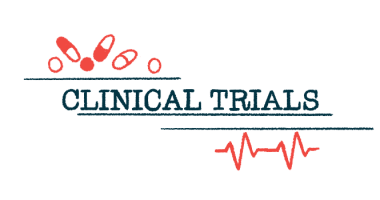Takhzyro in More Convenient Prefilled Syringe Approved in US for HAE

The U.S. Food and Drug Administration (FDA) has approved the use of a prefilled syringe of Takeda’s Takhzyro (lanadelumab) to prevent swelling attacks in hereditary angioedema (HAE) patients, 12 and older.
The prefilled syringe comes fully assembled and requires less preparation than the current vial-based injection of Takhzyro. Still, patients and caregivers should learn from a healthcare professional how to administer the syringe properly. This new option also reduces supplies and waste, according to Takeda.
“Today’s announcement is an important innovation for Takhzyro, offering people living with HAE and their caregivers an enhanced treatment administration experience with proven sustained reduction of attacks,” Cheryl Schwartz, senior vice president of Takeda’s rare disease business unit, said in a press release.
“This product delivery enhancement is intended to improve the overall patient experience and reflects Takeda’s continued commitment to the HAE community,” Schwartz added. “We look forward to introducing this new option to patients later this year.”
The FDA’s decision follows similar approvals in Europe and Canada, and in all of these regions, the therapy’s vial injectables has been available since 2018 for the same indication.
Health authorities in Japan are also reviewing a regulatory application seeking the approval of Takhzyro, given as a prefilled syringe.
Administered as an under-the-skin injection, Takhzyro works by blocking the activity of kallikrein, a precursor of bradykinin — an inflammatory molecule produced in excess in people with HAE, leading to bouts of swelling and pain.
By suppressing kallikrein, the therapy — developed by Shire, now part of Takeda — is thought to lower bradykinin levels and reduce the likelihood of swelling attacks.
Its recommended starting dose is 300 mg every two weeks, but dosing every four weeks may be considered, particularly for patients who remain attack-free for more than six months and have low body weight.
Takhzyro’s safety and effectiveness was mainly established in the international Phase 3 HELP trial (NCT02586805), which tested the therapy against a placebo in 125 people, 12 or older, with HAE types 1 or 2.
Data showed that Takhzyro, when given at its current recommended dose for six months, significantly reduced the monthly frequency of HAE attacks by 87% relative to a placebo. A greater proportion of patients receiving this treatment regimen remained attack-free throughout the trial, compared with those on a placebo (44.4% vs. 2.4%).
In addition, 81% of patients on this regimen showed a clinically relevant improvement in quality of life, with the chances of achieving such an improvement being more than seven times higher than among those given a placebo.
The therapy was generally safe and well-tolerated, with no serious treatment-related side effects. The most common side effects included pain, redness, and/or bruising around the injection site, headache, dizziness, and viral infections in the upper respiratory tract.
Further results from HELP’s open-label extension study (NCT02741596) showed that Takhzyro’s long-term treatment, for up to 2.5 years, remained safe and continued to effectively reduce the frequency of HAE attacks.








